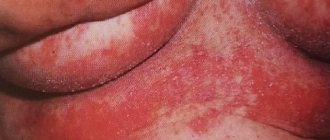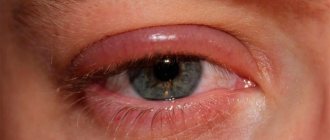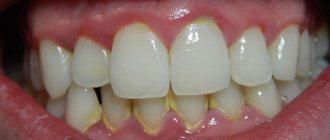Thrush, or candidal infection, accompanied by damage to the vaginal mucosa, is a problem for many women. The symptoms of this disease are so unpleasant that they completely knock the patient out of rhythm: due to severe itching, she cannot work normally, be sexually active, or even sleep peacefully.
THE COST OF AN APPOINTMENT WITH A GYNECOLOGIST IN OUR CLINIC IS 1000 rubles.
CLICK TO MAKE AN APPOINTMENT, TEST OR ULTRASOUND
Unfortunately, medications for thrush are advertised everywhere, which is why, having contracted candidiasis, women run not to the doctor, but to the pharmacy. After some time, the disease returns, which is natural, because such an infection cannot be cured with one pill; complex therapy is needed. That is why, at the first signs of thrush, you need to make an appointment with a good gynecologist and undergo full treatment. Today we will dispel myths about the treatment of thrush and formulate a number of recommendations that every woman should know.
Is thrush really a problem?
The content of the article
People of all ages suffer from candidiasis, with the peak incidence occurring between 20 and 40 years of age. According to statistics, 60% of women have been diagnosed with thrush at least once in their lives, and in 9%, candidiasis has a recurrent (repeating) course. In reality, this figure is higher, since in many patients the disease does not produce noticeable symptoms and the fungus is detected only when swabs are taken from the vagina.
The main problems of this pathology are self-medication, which leads to the disease becoming chronic, and negligent attitude towards one’s health. Gynecologists at the Diana Medical Center daily encounter cases of thrush, the severity of which is due to the patients’ late seeking of professional medical help.
Cost of treatment
Prices for the treatment of recurrent thrush in a medical clinic are available to every patient in need of professional medical care. In their work, our specialists practice modern methods of therapy, guaranteeing safety and effective results.
Gynecology
| Name of service | Price, rub.) | Discount |
Consultation
| Name of service | Price, rub.) | Discount |
| Appointment with a gynecologist (without examination), primary | 1400 | |
| Appointment with a gynecologist (examination, consultation), repeated | 1400 | |
| Appointment with a gynecologist (examination, consultation), primary | 1600 | |
| Consultation with a gynecologist-endocrinologist | 1600 | |
| Appointment with an obstetrician-gynecologist for pregnancy (examination, consultation), primary | 1700 | |
| Appointment with an obstetrician-gynecologist for pregnancy (examination, consultation), repeated | 1400 | |
| Consultation with a gynecologist on the selection of contraception | 1600 | |
| Consultation with a gynecologist on infertility issues | 1600 | |
| Consultation with a specialist with registration of a certificate of incapacity for work | 1600 | |
| Daily management of the patient according to the certificate of incapacity for work for 1 day | 300 | |
| Registration of a certificate of incapacity for work for pregnancy and childbirth | 6500 | |
| Control examination (Performed after a course of conservative, minimally invasive or surgical treatment) | 800 | |
| Treatment consultation based on examination results (selection of an individual treatment regimen): 1 disease | 1000 | |
| Individual treatment regimen: mix | 2000 | |
| Individual treatment regimen: 1 disease | 1000 | |
| Medical examination by an obstetrician-gynecologist for pregnancy, WITHOUT attachment | 1500 |
Survey
| Name of service | Price, rub.) | Discount |
| Extended colposcopy | 1500 | |
| Advanced video colposcopy | 1700 | |
| Aspiration biopsy of the endometrium (Pipel biopsy) | 2000 | |
| Cervical biopsy | 3000 |
Treatment
| Name of service | Price, rub.) | Discount |
| Chlamydia from 1 to 4 categories. difficulties | 7000-14000 | |
| Trichomoniasis from 1 to 4 categories. difficulties | 5000-7000 | |
| Candidiasis from 1 to 4 categories. difficulties | 4000-8000 | |
| Gardnerellosis from 1 to 4 categories. difficulties | 4000-8000 | |
| Mycoplasmosis / ureaplasmosis from 1 to 4 categories. difficulties | 6000-12000 | |
| Bacterial urethritis from 1 to 4 categories. difficulties | 4000-9000 | |
| Treatment of inflammatory diseases of the female genital organs from 1 to 4 categories. difficulties | 4000-12000 | |
| Antiviral treatment from 1 to 4 categories. difficulties | 8000-12000 | |
| Treatment of infertility of inflammatory origin from 1 to 4 categories. difficulties | 8000-14000 | |
| Treatment of single genital warts/papillomas (cost per unit) | 700 | |
| Treatment of genital warts/papillomas: multiple from 1 to 4 categories. difficulties | 2500-5500 | |
| Treatment of genital warts/papillomas: condylomatosis | 9500 | |
| Treatment of cervical dysplasia using radiosurgery | 3500 | |
| Treatment of cervical erosion by radiosurgical method from 1 to 3 categories. difficulties | 3500-7000 |
Manipulation
| Name of service | Price, rub.) | Discount |
| Postoperative dressing | 800 | |
| Cardiotocography (CTG) during multiple pregnancy | 2500 | |
| Cardiotocography (CTG) of the fetus | 1900 | |
| Rikta | 350 | |
| Nova-Ring insertion/removal | 500/500 | |
| Instillation of a mud tampon | 400 | |
| Opening a vaginal cyst | 2500 | |
| Opening and draining the boil (perineum) | 1500 | |
| Opening of abscess of the Bartholin gland from 1 to 4 categories. difficulties | 5000-10000 | |
| Opening of nabothian cysts using radiosurgical method (for 1 pc.) | 1000 | |
| Drug treatment of cervical diseases (solkovagin) | 2500 | |
| Diathermocoagulation of cervical diseases | 2500 | |
| Cryodestruction of cervical diseases | 2500 | |
| Cryodestruction of benign tumors of the external genitalia | 700 | |
| Cryodestruction of papillomas | 1000 | |
| Insertion of an intrauterine device provided by the Customer | 2500 | |
| Insertion of the Mirena intrauterine device (excluding the cost of the IUD) | 2500 | |
| Spiral "Mirena" | 15000 | |
| Insertion of an intrauterine device provided by the Contractor: “Multiloud” device | 4000 | |
| Removal of the intrauterine device, uncomplicated/complicated | 1500/2500 | |
| Removal of foreign bodies from the vagina, uncomplicated/complicated | 1200/2000 | |
| Instillation of the drug | 300 | |
| Treatment of the external genitalia | 500 | |
| Vaginal/cervical treatment | 500 | |
| Therapeutic bath with medicine | 500 | |
| Vaginal sanitation | 500 |
Why thrush develops: causes of candidiasis
The main cause of the disease is fungi of the genus Candida. Normally, the fungus lives in the body of any person, but under certain circumstances, as a result of the influence of various predisposing factors, it begins to actively multiply. Therefore, such microorganisms are called opportunistic.
Normal vaginal microflora keeps the fungus from excessively multiplying. When it changes (dysbiosis), the growth of Candida increases, and thrush .
Stimulate the activation of infection:
- hormonal changes in the body: pregnancy, menopause, diseases of the endocrine system (diabetes, thyroid problems), incorrect selection of birth control pills;
- violation of personal hygiene rules and wearing synthetic underwear - the fungus loves dampness, warmth and does not like fresh air;
- douching, using aggressive cleaning agents;
- the presence of sexually transmitted infections, inflammation of the internal female organs, infection with thrush from a partner;
- diseases accompanied by changes in the concentration of sex hormones in the blood,
- pregnancy and chronic foci of infection in the body, weakening the immune system;
- uncontrolled use of antibiotics, which destroy, along with parasitic flora, beneficial lactobacilli - protectors of the mucous membrane.
It’s easy to provoke candidiasis: just walk around in tight synthetic panties in the heat. The fungus develops instantly in such conditions - it loves moisture, warmth, and does not need air.
Types of candidiasis
Based on various characteristics, candidiasis is divided into several groups.
Firstly, these are acute and chronic candidiasis. Acute occurs suddenly under the influence of certain factors (see causes of candidiasis), proceeds violently with vivid symptoms, but after proper treatment it goes away without a trace.
Chronic candidiasis most often develops after inadequate treatment of an acute process and is a concern either constantly or during periodic exacerbations. It is possible to cure it completely, but this is a more difficult task that cannot always be solved.
This is another very important reason to treat any infection immediately as effectively as possible.
Secondly, this fungal disease can be divided into cutaneous candidiasis and mucosal candidiasis.
The skin is usually affected in the area of large axillary, inguinal, intergluteal folds, under the mammary glands, interdigital spaces, periungual ridges, corners of the mouth and red border of the lips, around the nose.
Sometimes candidal changes in the nail plates occur at the same time.
Candidiasis of the mucous membranes covers the genitals (candidal balanoposthitis, urethritis, prostatitis, vulvovaginitis), oral cavity (stomatitis, glossitis), upper and lower respiratory tract (pharyngitis, laryngitis, tracheitis, bronchitis, rhinitis), gastrointestinal tract, eyes. In severe cases, generalized candidiasis develops, covering all internal organs.
Is thrush contagious?
Keep in mind that candidiasis is a contagious disease and is easily transmitted to a sexual partner, so you will have to be treated together. The disease is often confused with an STD. In fact, thrush does not belong to this group, but contact with a man suffering from candidiasis will provoke the development of infection. A woman also transmits Candida to her partner. In men, thrush occurs more easily, this is due to good access of air to the mucous membrane of the head, but even without obvious signs, a once infected man becomes a carrier of the infection.
What is Candida?
Candida is a genus of yeast with many species. Candida must be distinguished from mold - these are different microorganisms, although they belong to the same kingdom (fungi). Candida is found everywhere and is a symbiont of many animals and humans. Candida fungus is opportunistic - despite the fact that in a healthy body the microorganism may not manifest itself in any way, the slightest hormonal shift or decreased immunity leads to the development of candidiasis: a dangerous disease that can affect various organs and tissues.
Symptoms of thrush: what a woman feels with candidiasis
Candidiasis is difficult to miss - it is one of the most unpleasant diseases. A woman is worried about incessant itching in the genital area, frequent painful urination (dysuria), pain and discomfort during sexual intercourse (dyspareunia), associated with vaginal dryness and injury. The main sign of fungal activity is a cheesy discharge. Whitish deposits begin to form on the reddened mucosa, which separate and form a cheesy vaginal discharge. In men, thrush manifests itself as redness of the head, a white coating accumulates on it, and red spots may form.
In advanced stages, the infection from the external genitalia spreads to the anal area. Cracks in the mucous membrane occur, accompanied by pain during defecation. If thrush is not treated, it becomes chronic and torments the woman constantly - during hypothermia, menstruation, after bathing, when personal hygiene rules are violated or in the premenstrual period, when hormonal levels change, etc.
Against the background of thrush, due to scratching and weakening of the natural flora of the vagina, a bacterial infection can develop, leading to bacterial vaginitis. Vaginitis quickly spreads to the uterus and its appendages, which in some cases can lead to decreased fertility (the ability to conceive), even to infertility.
If any symptoms of thrush appear, especially during pregnancy or breastfeeding, you should contact your doctor to confirm the diagnosis and prescribe timely treatment. The doctor makes a final diagnosis after receiving the test result (smear). A small amount of fungus does not cause disease and is normal.
Complications
For some ladies, chronic thrush seems to be an insignificant problem, because the symptoms can be smoothed out, and its manifestations can be attributed to monthly ailments before menstruation.
If chronic thrush in women is not treated promptly and effectively, then it is quite possible to expect the following unpleasant moments:
- The appearance of adhesions in the pelvic area, which in turn leads to obstruction of the fallopian tubes, and, consequently, to infertility.
- An increase in infectious diseases, spreading to the entire body, and not just to the genitourinary system.
- Damage to the unborn baby inside the womb if the woman does not get rid of Candida fungi before pregnancy.
Taking all this into account, do not delay the treatment of chronic thrush, so as not to become a target of Candida yeast and jeopardize the health of your newborn baby.
Diagnosis of thrush
Making a correct diagnosis is not a problem for an experienced doctor, but you will still have to take a smear to determine the purity of the flora. After all, thrush is rarely the only problem; as a rule, the analysis reveals a whole bunch of concomitant infections. Sexually transmitted infections are the cause of recurrent thrush in most cases.
To determine the best antifungal agent, the isolated fungi are inoculated and drugs are tested on them, determining the most effective one.
Symptoms of candida in the intestines
Any shift in the internal balance of the body can lead to active proliferation of the fungus. It becomes dominant and suppresses the beneficial intestinal microflora, disrupting the normal enzymatic activity of the gastrointestinal tract and negatively affecting the absorption of most nutrients. Candida infection in the intestines is manifested by the following symptoms:
- Bloating and increased gas formation;
- Disturbance of defecation: stool becomes infrequent, but liquid, possibly foamy;
- The appearance of abdominal pain of varying severity.
As the disease becomes chronic, the symptoms become more pronounced, a serious imbalance of micro- and macroelements is added to them, and waste products of the fungus accumulate in the body, which are poisonous to humans. All this leads to inflammation of the intestines, deterioration of its functions, disruption of peristalsis and enzymatic activity. Against the background of weakened immunity, concomitant diseases (for example, gastroenteritis) may develop.
Treatment of thrush: only complex therapy
Contrary to popular belief, thrush is not cured with one pill. A doctor’s professional approach involves a set of measures.
The doctor selects antifungal drugs that can be taken:
- orally to reduce the amount of fungus throughout the body;
- in the form of suppositories or ointments locally - they quickly relieve the symptoms of candidiasis.
Treatment of thrush must necessarily include normalization of personal hygiene and treatment of STIs, if detected.
To combat Candida fungi, antifungal drugs are used, most often in the form of suppositories or a special vaginal gel. It is also necessary to take antifungal drugs internally. At the same time, the doctor will prescribe restorative therapy that restores immunity and normal vaginal flora. The patient is prescribed vitamins and immunostimulants that improve immunity. After completion of antibacterial therapy, the flora is restored with medications containing lactobacilli - this is the most important part of the beneficial microflora of the vagina.
Men will also have to take pills and treat the penis daily with a special solution or ointment prescribed by the doctor.
Prevention consists of rational use of antibiotics, regular visits to the gynecologist with taking smears for flora, strengthening the body, maintaining hygiene and refusing to wear synthetic underwear in hot weather.
How to choose drugs for fungus
To combat mild fungal infections, topical preparations—varnishes, ointments, sprays, shampoos, and special solutions—are sufficient. For advanced diseases, both local and systemic agents are used. Anti-fungal tablets serve as a supplement, ridding the subungual skin and other tissues of the pathogen. In the “Antifungal Drugs” section on our website you will find the medications listed in this article, as well as their analogues.
Any drugs for fungus should be selected with the help of a specialist who can determine the severity of the disease and take into account the individual characteristics of the body.
The offer is not an offer, the drugs presented are medicines, specialist consultation is required.
Myths and truth about treating thrush
Myth No. 1. Thrush is normal!
The causative agent of thrush is fungi of the genus Candida, which are classified as opportunistic microorganisms. This means that they are contained in small quantities in the microflora of the body of healthy women. This fact leads some patients to believe that periodic manifestations of thrush do not deserve attention.
This is a misconception, because normally fungal pathogens do not cause unpleasant symptoms and do not bring discomfort to their owner. But in large quantities, Candida becomes dangerous, so thrush needs to be treated.
Myth No. 2. If thrush is not treated, it will go away on its own
This misconception, propagated on many websites, has led to the spread of chronic thrush among young women.
The primary symptoms of the disease - severe itching and curdled discharge, characteristic of the acute phase of the disease, indeed, even without treatment, gradually fade away. But this is a false sense of recovery. After some time, the troubles will return again - at the moment when the body experiences severe physical or psychological stress. In addition, the recurrence of thrush is facilitated by changes in hormonal levels, which occurs during menstruation and during pregnancy.
Myth No. 3. One tablet is enough to treat thrush!
The advertisement claims that after taking one capsule of the miracle drug, a woman will forever forget about the symptoms of thrush. Yes, the thrush may go away, but it will be replaced by severe dysbiosis, vaginosis and other diseases associated with disturbances in the vaginal microflora.
All antifungal agents used in the treatment of candidiasis (thrush) are drugs that specifically suppress pathological flora. At the same time, a safe drug should have a gentle effect on the mucous membrane without causing dysbacteriosis. In other words, he should treat smoothly, leaving time for the body to adapt. Whereas the “killer dose” will destroy both the causative agent of thrush and all living things, freeing up a springboard for colonization by new fungi and bacteria.
In addition, thrush rarely comes alone. Analysis (smear) sometimes reveals a whole bunch of STDs. In this case, combination treatment is required.
Myth No. 4. Local remedies for thrush are useless
Topical antifungal drugs quickly suppress fungal growth and play an important role in the treatment of thrush. Candles, creams, gels and sprays do not cause side effects and have no restrictions on use. But local therapy is considered by gynecologists exclusively as an additional measure, since it is effective only in the early stages of the development of pathology.
At the same time, suppositories and ointments are the drugs of choice in the treatment of candidiasis in pregnant and lactating women.
Myth No. 5. The appearance of thrush does not depend on lifestyle
The development of thrush always has a specific cause. Frequent stress, poor diet and heavy physical activity, which weaken the immune system, activate the fungal flora. Failure to comply with personal hygiene rules also affects the state of the vaginal microflora; in addition, the disease can be acquired by changing partners and using traumatic sex toys.
Another, perhaps significant reason is the uncontrolled use of antibiotics that affect the flora of the body. Broad-spectrum antibacterial drugs are not able to distinguish “bad” bacteria from “good” ones; they kill everything not only in the vagina, but also in the stomach and intestines. Therefore, lovers of self-medication are in for a surprise in the form of dysbiosis and accompanying candidiasis.
Myth No. 6. The most effective treatment for thrush is traditional medicine!
Traditional methods of treating candidiasis usually come down to the use of infusions and decoctions of herbs for washing and douching the vagina. For this purpose, herbs with antibacterial and antifungal effects are used.
These measures are good only as an aid to the main treatment, but thrush cannot be cured in this way. For quality treatment of vaginal candidiasis, you need to take antifungal drugs, immunostimulants and vitamins. Only this set of medications is guaranteed to reduce the likelihood of relapse of the disease.
Structure and reproduction
What does Candida look like? Fungi of the genus Candida have a somewhat elongated shape and, under favorable conditions, are capable of forming false mycelium (mycelium), consisting of elongated cells. The peculiarities of Candida representatives include the fact that they are capable of forming only chlamydospores, which are not true spores, but, nevertheless, have an improved defense mechanism. In fact, this form of existence of candida resembles the cysts formed by some bacteria: chlamydospores have a dense outer shell that protects the fungus from aggressive environmental factors.
Spores play a significant role in the spread of candida, since in this form the fungus can remain viable in the environment for a long time until it enters the body of a new host. Fungi reproduce by budding. Candida mushrooms, like many others, are sensitive to the acid-base balance and are able to change it in their favor. The most favorable conditions for the development of microorganisms are slightly alkaline or neutral, therefore, answering the question “what is Candida afraid of?”, we can say that the fungus dies in an acidic environment.
Where to cure thrush in St. Petersburg
It is more difficult to cure thrush than to prevent it. Lead a healthy lifestyle, avoid casual sex and observe personal hygiene rules - these simple rules will protect you not only from thrush, but also from other sexual diseases. And if thrush still strikes, seek professional help from the doctors at the Diana Multidisciplinary Medical Center in St. Petersburg.
CLICK TO MAKE AN APPOINTMENT, TEST OR ULTRASOUND
If you find an error, please select a piece of text and press Ctrl+Enter
Candida in the human intestine
Candida is found in the intestines of more than 80% of people, and does not always manifest itself as a pathogenic microorganism. Like many other yeast cultures, candida is actively involved in enzymatic processes that occur in the small intestine, for example, helping to process excess sugar. But, unlike many other species that make up the beneficial intestinal microflora, Candida is an aggressive fungus and numerous external and internal factors can trigger the mechanism of its active reproduction. And then the patient develops candidiasis, a disease that can lead to many unpleasant consequences.
The following factors can provoke the rapid development of candida:
- Taking a course of antibiotics. Antibiotics not only destroy viruses and bacteria, but also suppress the intestinal microflora, giving the green light to the development of candida. Therefore, against the background of such therapy, candidiasis often develops.
- Conditions associated with reduced immunity. These include early childhood and old age, pregnancy, stress, and so on. Immunity also decreases due to allergies, after respiratory diseases, which can also provoke candidiasis.
- Undergoing aggressive therapy. For example, in the treatment of cancer. In general, taking any strong medications affects homeostasis and promotes the active development of candida.
- Imbalance of micro- and macroelements. According to experts, any, sometimes even the most insignificant external or internal influence can cause active growth and development of candida. It is important to know that candida lives not only in the intestines. This fungus is also found in the oral cavity, on the mucous membranes of the genital organs of women and men, therefore, several types of fungal invasion are distinguished, each of which is accompanied by its own unique clinical picture.
Treatment of candidiasis: three steps
1.Cleansing
Option #1. Liquid cleansing (1-2 days)
- You will need vegetable broth with onions, garlic, celery, cabbage, and sea salt. Boil all ingredients. Remove vegetables and cool broth.
- Drink warm broth throughout the day. It is recommended to drink enough water during this time to flush out toxins. Cleansing can be done every few weeks.
Option #2. Stewed vegetables (3-5 days)
- Eliminate grains, sugar, fruits, starch and alcohol from your diet for 3-5 days.
- We use organic steamed vegetables. During this period - no more than once a day - you can eat salads made from leafy or bitter greens, lightly seasoned with coconut oil and apple cider vinegar.
Diet
- Elimination of sugar, alcohol and “fast” carbohydrates from the diet.
- Introduction to the menu of sweet potatoes, yams, peas, lentils, beans, carrots, beets, corn, squash, spaghetti, zucchini, rutabaga.
- Quinoa, barley, sorghum - 1 serving per day.
- Low consumption of fruits, natural sweeteners (maple syrup, honey).
- Inclusion of fermented milk products and fermented vegetables (sauerkraut) into the food protocol.
Fragrance oils, additives and coconut oil
- Coconut oil has antimicrobial properties. The acids in coconut oil destroy candida when taken orally and when applied topically.
- Milk thistle cleanses the liver of toxins and helps the body recover.
- Vitamin C activates the functions of the adrenal glands and restores immunity.
- Clove, oregano, and myrrh oils kill candida. Lavender oil inhibits the growth of fungus. Essential oils are taken orally for no more than 10 days in a row. published
PS And remember, just by changing your consciousness, we are changing the world together! © econet
Candida mushrooms in the mouth
Another common form of candida infection is due to the explosive growth of fungus in the mouth. It can be provoked not only by a weakened immune system, but also, for example, by some bad habits (smoking), regularly wearing dentures, choosing inappropriate oral hygiene products, etc. The most characteristic symptom of candidiasis is the coating of the tongue with white flakes, reminiscent of cottage cheese in consistency. There is visible tissue irritation (redness, itching), taste sensations may change, and cracks may form on the tongue or in the corners of the lips.
Treatment of candida in the tongue should be thoughtful and comprehensive, since this disease is prone to chronicity. Incorrect therapy leads only to temporary suppression of candida in the oral cavity, but after some time the fungus returns, causing the patient a lot of trouble.
Candida on the skin and mucous membranes
Candida, which is often mistaken for a virus, can be localized on the mucous membranes of the genital organs. This manifestation is called “thrush” and, contrary to popular belief, not only women suffer from it. The disease manifests itself as itching in the groin area, redness of the mucous membranes, the appearance of a whitish coating, and women and men may feel discomfort (pain, itching) during sexual intercourse and when urinating.
If candida affects the dermis, the symptoms of the infestation can be even more unpleasant. Patients complain of redness of the skin, it itches and becomes sensitive to touch, gets wet, and has an unpleasant odor. Most often, the most delicate areas of the skin are affected by the fungus: between the toes and hands, in the groin area.








